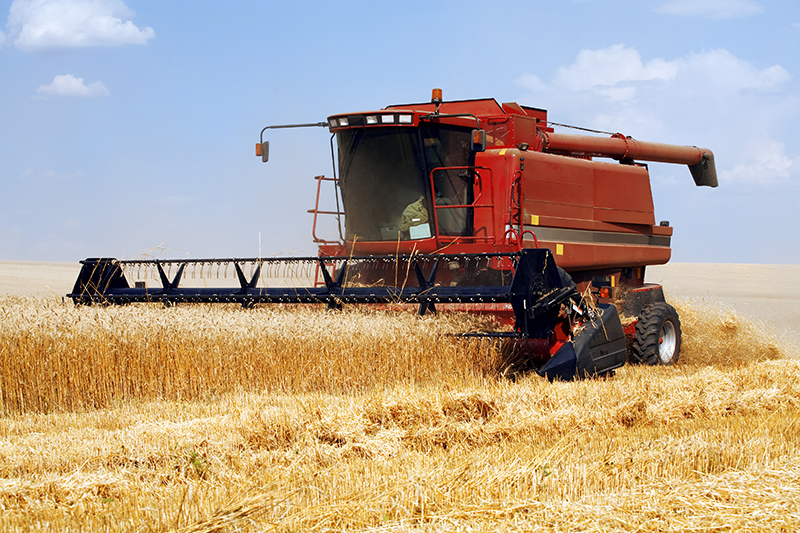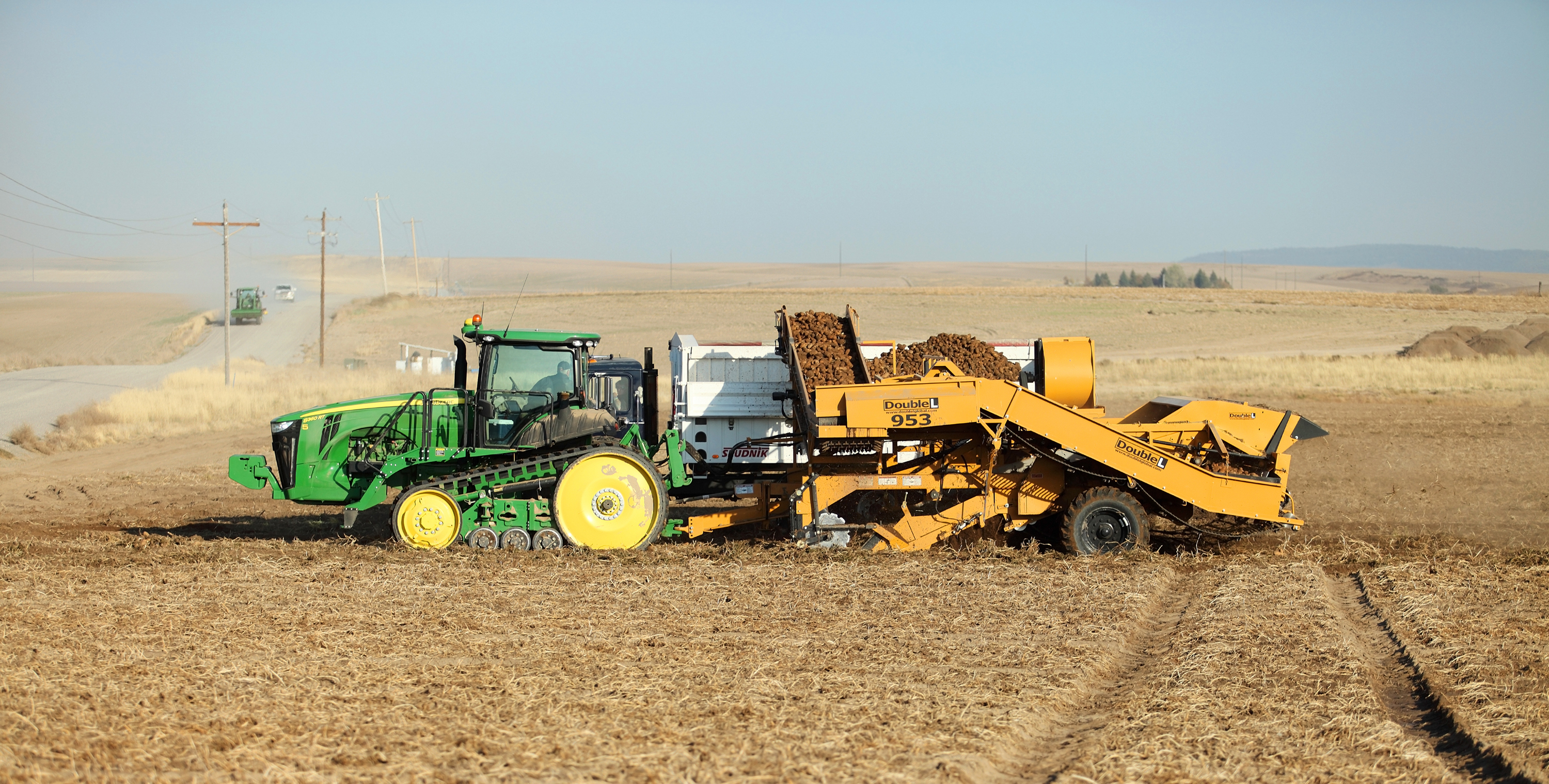Combine is a farm machine that cuts and threshes grain or other crops in one operation. The word combine stands for combined harvester-thresher. Some are large, self-powered machines. Others are smaller models pulled by tractors. Large combines cut paths wider than 20 feet (6 meters). Small ones cut paths about 6 feet (1.8 meters) wide. Those with special attachments can collect and shell corn, soybeans, and other crops.

As a combine crosses a field, a cutting bar on the front cuts the stalks of grain. Paddles on a long, rotating reel press the stalks against the cutting bar. The cut stalks fall onto a platform, and a feeder carries them to a threshing drum. In the drum, a revolving cylinder beats most of the grain off the stalks, creating straw. The grain falls through a grate into a grain pan. The straw moves to straw racks, which tumble it to remove any remaining grain. The straw then drops from the combine.

All the grain collects in the grain pan. From there, it passes to a series of sieves, where a fan blows the husks away from the kernels. The kernels fall through the sieves and are carried to temporary storage in a grain tank. Finally, an unloading conveyor empties the grain from the grain tank into trucks or wagons that transport the grain to storage bins.
One of the first successful combines was built in the 1830’s by Hiram Moore and John Haskall, near Kalamazoo, Michigan. It was pulled by 20 horses. A wheel that rolled along the ground drove the cutting and threshing machinery. In the 1880’s, steam engines began to power combines. Internal-combustion engines were replacing steam engines by the early 1900’s.

Most early combines were used west of the Rocky Mountains. Farmers elsewhere used reapers and threshing machines, which required more time and labor than did combines (see Reaper ; Threshing machine ). After World War I ended in 1918, new designs of combines, plus a labor shortage, caused more farmers to use combines. Since then, combines have replaced most reapers and threshing machines.
